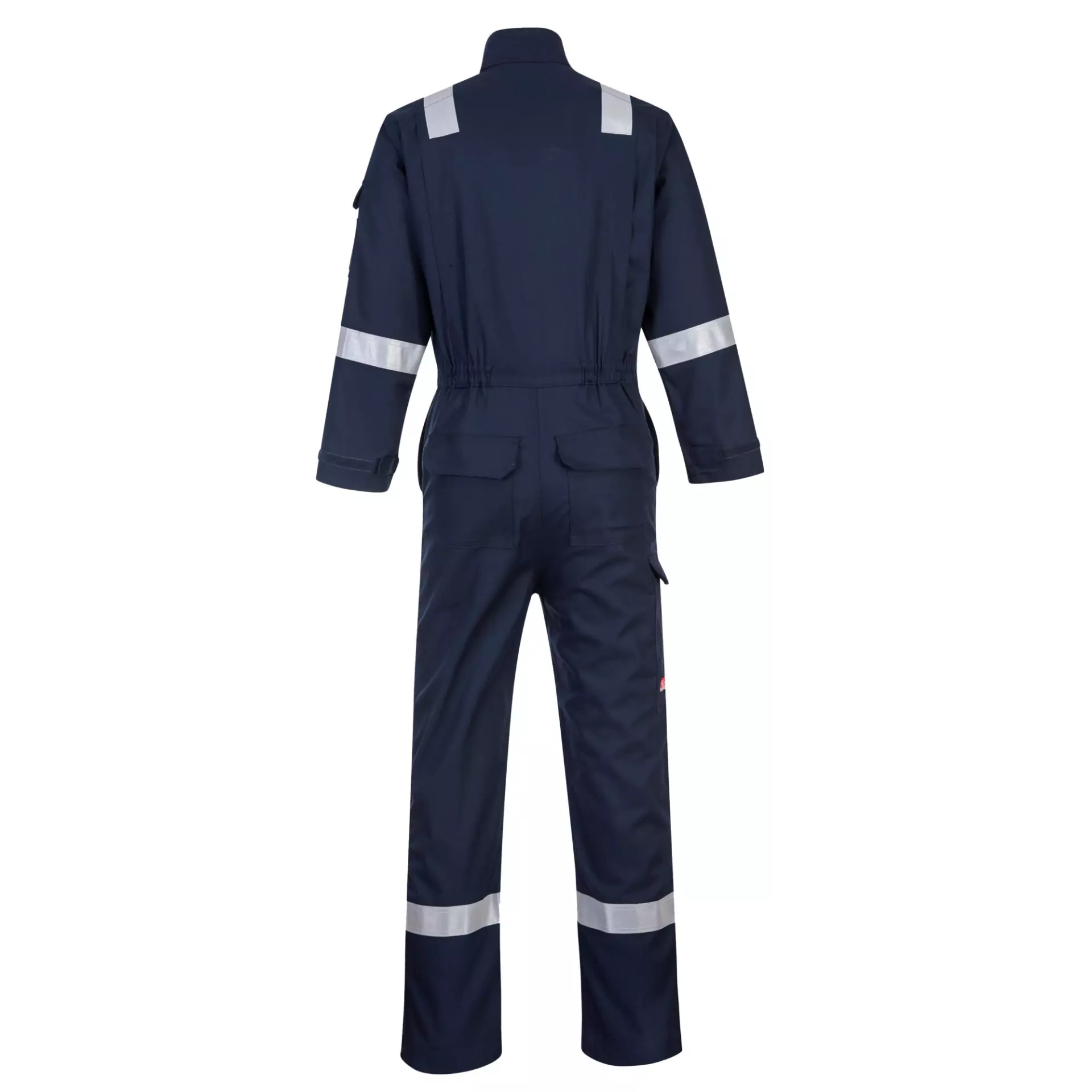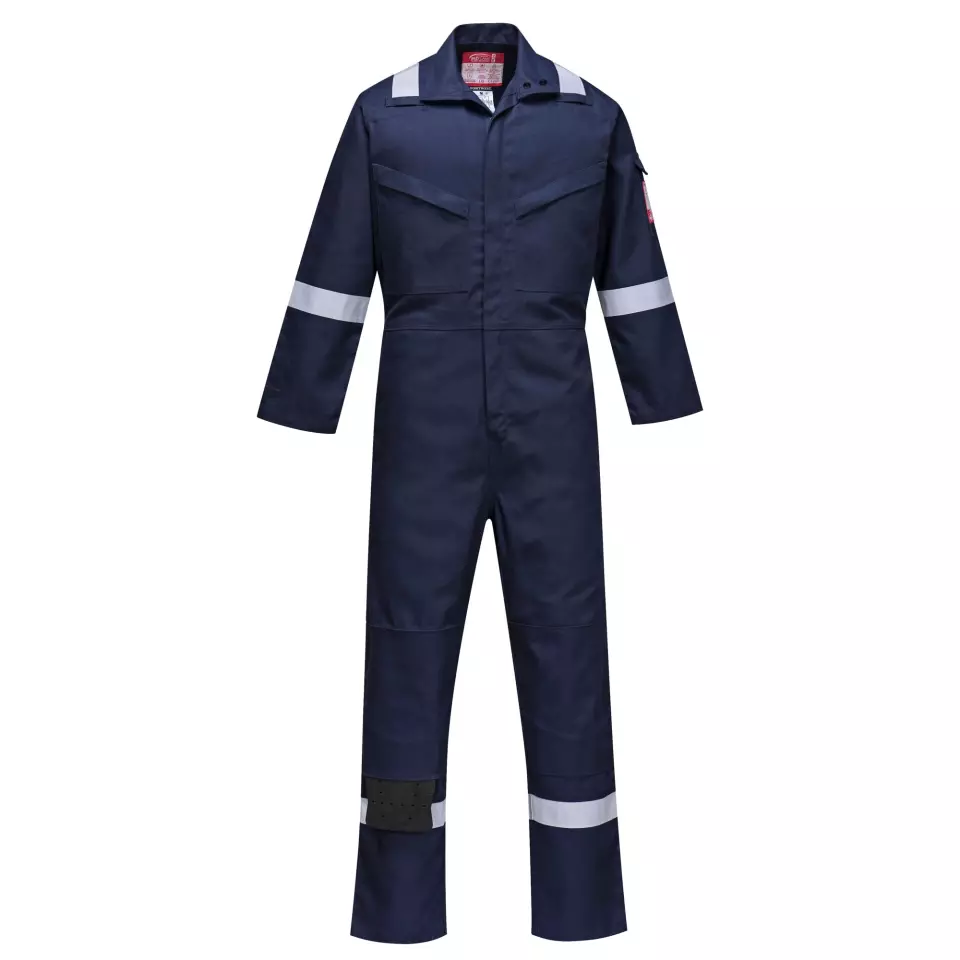


Features You'll Love

Pocket System · Knee Pad Pockets
Defines the types and placement of pockets on overalls, affecting storage capacity and accessibility for tools, equipment, and personal items during work.

Fit · Regular
Determines how closely the overalls follow your body shape, affecting comfort, range of motion, and ability to layer clothing underneath.
Portwest
Bizflame Industry Coverall, Navy
Bizflame Industry Coverall, Navy
4.5 / 5
108,53 €
Choose size
Free delivery
Features You'll Love

Pocket System · Knee Pad Pockets
Defines the types and placement of pockets on overalls, affecting storage capacity and accessibility for tools, equipment, and personal items during work.

Fit · Regular
Determines how closely the overalls follow your body shape, affecting comfort, range of motion, and ability to layer clothing underneath.
Product description
Independently certified to five international safety standards, this flame-resistant coverall is engineered for demanding industrial environments. The special FR polyester fabric construction ensures maximum longevity while providing comprehensive protection against radiant, convective and contact heat, molten metal splash, and UV radiation. With anti-static properties and non-magnetic construction, this coverall is suitable for ATEX and ESD environments, featuring industrial laundry capability and Texpel stain-resistant finish for enhanced durability.
Product Features:
- Special FR polyester fabric for maximum longevity
- Side access openings and two-way zip for quick access
- 10 pockets for ample storage including rule pocket and shoulder pad pockets
- Two tier knee pad pockets allowing two positioning options
- Radio loops for easy clipping of equipment
Technical Details:
- Industrial laundry wash at 75°C and tunnel dry at 155°C
- Hook and loop cuffs for secure fit
- Texpel stain resistant finish repels dirt and stains
- 40+ UPF rated fabric to block 98% of UV rays
- Anti-static and non-magnetic properties (nickel and ferrous free)
Recommended Applications:
- Suitable to be worn in an ATEX environment
- Suitable for use in ESD environments
Standards:
- EN ISO 11612 (A1+A2, B1, C1, E2, F1)
- EN ISO 11611 Class 1 (A1+A2)
- EN 1149-5
- IEC 61482-2 IEC 61482-1-1 (ELIM 11 CAL/CM², ATPV 13 CAL/CM²)
- IEC 61482-2 IEC 61482-1-2 APC 1
- EN 13034 Type 6
- EN 17353 Type B2
- ASTM F1959/F1959M-12 (ATPV 16 CAL/CM² (HAF 83.7%))
- CE-CAT III certified